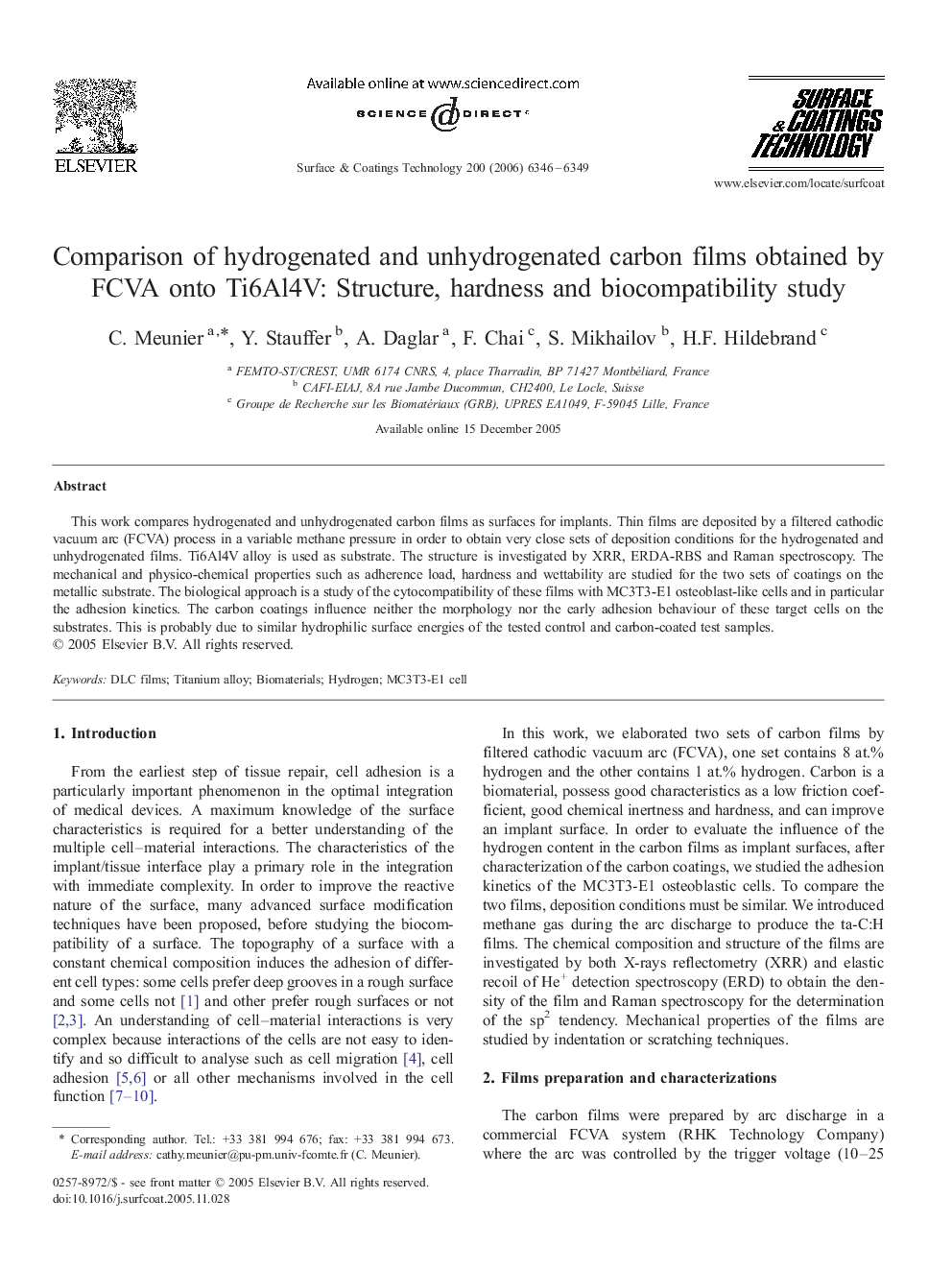| Article ID | Journal | Published Year | Pages | File Type |
|---|---|---|---|---|
| 1661917 | Surface and Coatings Technology | 2006 | 4 Pages |
This work compares hydrogenated and unhydrogenated carbon films as surfaces for implants. Thin films are deposited by a filtered cathodic vacuum arc (FCVA) process in a variable methane pressure in order to obtain very close sets of deposition conditions for the hydrogenated and unhydrogenated films. Ti6Al4V alloy is used as substrate. The structure is investigated by XRR, ERDA-RBS and Raman spectroscopy. The mechanical and physico-chemical properties such as adherence load, hardness and wettability are studied for the two sets of coatings on the metallic substrate. The biological approach is a study of the cytocompatibility of these films with MC3T3-E1 osteoblast-like cells and in particular the adhesion kinetics. The carbon coatings influence neither the morphology nor the early adhesion behaviour of these target cells on the substrates. This is probably due to similar hydrophilic surface energies of the tested control and carbon-coated test samples.
